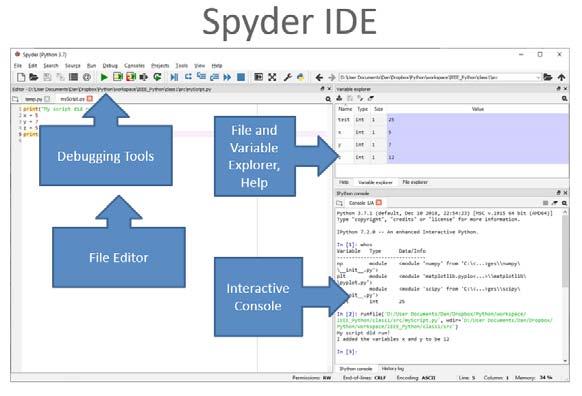
6 minute read
Call for Course Speakers and Organizers/ Call for Articles
** Softmax activation function and log-likelihood cost function ** Rectified Linear Unit ** Overfitting and Regularization: *** L2 regularization *** Dropout *** Artificially expanding data set *** Hyper-parameters
Introduction to Practical Neural Networks and Deep Learning (planned Part 2, to be confirmed) Convolutional Neural Networks. * Local receptive field, Feature map. * Pooling layer. * Simple (Python) Convolutional Neural Network to classify a handwritten digit. * Improving the network, Regularization. * Touch on more recent progress in image recognition, such as Residual Network (ResNet).
Pre-requisites:
There is some heavier mathematics in proving the four fundamental equations behind backprogation, so a basic familiarity with multivariable calculus and linear algebra is expected, but nothing advanced is required. (The backpropagation equations can be also just accepted without bothering with the proofs since the provided python code for the simple network just makes use of the equations.)
Speaker Background:
CL Kim works in Software Engineering at CarGurus, Inc. He has graduate degrees in Business Administration and in Computer and Information Science from the University of Pennsylvania. He has previously taught for a few years the well-rated IEEE Boston Section class on introduction to the Android platform and API.
Decision (Run/Cancel) Date for this Course is Monday, March 15
IEEE Members $110 Non-members $130
http://ieeeboston.org/event/neuralnetworks/?instance_id=2987
Call for Course Speakers/Organizers
IEEE’s core purpose is to foster technological innovation and excellence for the benefit of humanity. The IEEE Boston Section, its dedicated volunteers, and over 8,500 members are committed to fulfilling this core purpose to the local technology community through chapter meetings, conferences, continuing education short courses, and professional and educational activities.
Twice each year a committee of local IEEE volunteers meet to consider course topics for its continuing education program. This committee is comprised of practicing engineers in various technical disciplines. In an effort to expand these course topics for our members and the local technical community at large, the committee is publicizing this CALL FOR COURSE SPEAKERS AND ORGANIZERS.
The Boston Section is one of the largest and most technically divers sections of the IEEE. We have over 20 active chapters and affinity groups. If you have an expertise that you feel might be of interest to our members, please submit that to our online course proposal form on the section’s website (www.ieeeboston.org) and click on the course proposal link (direct course proposal form link is http://ieeeboston.org/course-proposals/ . Alternatively, you may contact the IEEE Boston Section office at ieeebostonsection@gmail.com or 781 245 5405.
• Honoraria can be considered for course lecturers
• Applications oriented, practical focused courses are best (all courses should help attendees expand their knowledge based and help them do their job better after completing a course • Courses should be no more than 2 full days, or 18 hours for a multi-evening course • Your course will be publicized to over 10,000 local engineers • You will be providing a valuable service to your profession • Previous lecturers include: Dr. Eli Brookner, Dr.
Steven Best, Colin Brench, to name a few.
Python Applications for Digital Design and Signal Processing
Times and Dates (for live Q&A sessions) : 7 - 8PM ET, February 4, 11, 18, 25, 2021
Speaker: Dan Boschen
(Last Notice before Course Begins, Please Register Now!!!)
This is a hands-on course combining pre-recorded lectures with live Q&A and workshop sessions in the popular and powerful open source Python programming language.
New Format with Pre-Recorded Videos: The course format has been updated to release pre-recorded video lectures that students can watch on their own schedule, and an unlimited number of times, prior to live Q&A workshop sessions on Zoom with the instructor. The videos will also be available to the students for viewing for up to two months after the conclusion of the course.
Overview: Dan provides simple, straight-forward navigation through the multiple configurations and options, providing a best-practices approach for quickly getting up to speed using Python for modelling and analysis for applications in signal processing and digital design verification. Students will be using the Anaconda distribution, which combines Python with the most popular data science applications, and Jupyter Notebooks for a rich, interactive experience.
The course begins with basic Python data structures and constructs, including key "Pythonic" concepts, followed by an overview and use of popular packages for scientific computing enabling rapid prototyping for system design.
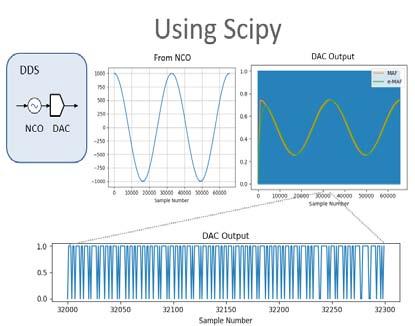
During the course students will create example designs including a sigma delta converter and direct digital synthesizer both in floating point and fixed point. This will include considerations for cycle and bit accurate models useful for digital design verification (FPGA/ASIC), while bringing forward the signal processing tools for frequency and time domain analysis.
Jupyter Notebooks: This course makes extensive use of Jupyter Notebooks which combines running Python code with interactive plots and graphics for a rich user experience. Jupyter Notebooks is an open-source webbased application (that can be run locally) that allows users to create and share visually appealing documents containing code, graphics, visualizations and in-
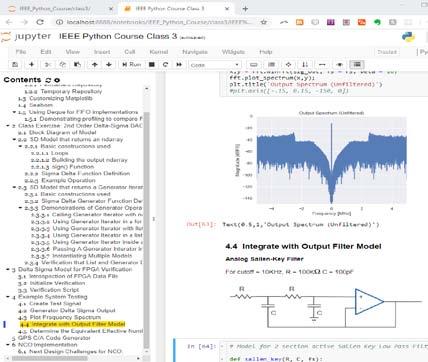
teractive plots. Students will be able to interact with the notebook contents and use “take-itwith-you” results for future applications in signal processing.
Target Audience: This course is targeted toward users with little to no prior experience in Python, however familiarity with other modern programming languages and an exposure to object-oriented constructs is very helpful. Students should be comfortable with basic signal processing concepts in the frequency and time domain. Familiarity with Matlab or Octave is not required, but the equivalent operations in Python using the NumPy package will be provided for those students that do currently use Matlab and/or Octave for signal processing applications.
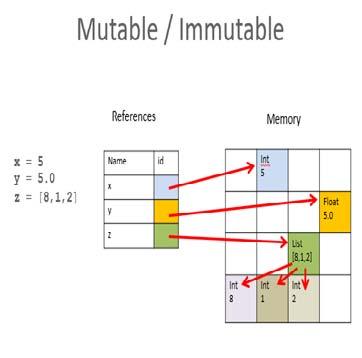
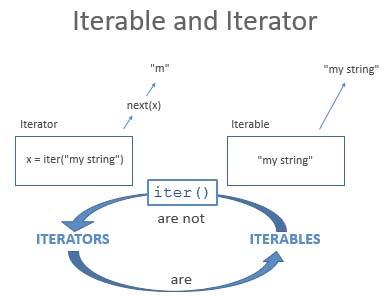
Benefits of Attending / Goals
of Course: Attendees will gain an overall appreciation of using Python and quickly get up to speed in best practice use of Python and related tools specific to modeling and simulation for signal processing analysis and design.
A laptop (Mac or PC) preconfigured with Anaconda is required; the specific installation instructions will be emailed to students prior to the start of class.
Pre-recorded lectures (3 hours each) will be distributed Friday prior to all Workshop dates. Workshop/ Q&A Sessions are 7pm-8pm on the dates listed below:
OUTLINE Thursday, February 4
Topic 1: Intro to Jupyter Notebooks, the Spyder IDE and the course design examples. Core Python constructs.
Thursday, February 11
Topic 2: Core Python constructs; iterators, functions, reading writing data files.
Thursday, February 18
Topic 3: Signal processing simulation with popular packages including NumPy, SciPy, and Matplotlib.
Thursday, February 25
Topic 4: Bit/cycle accurate modelling and analysis using the design examples and simulation packages
Biography:
Dan Boschen has a MS in Communications and Signal Processing from Northeastern University, with over 25 years of experience in system and hardware design for radio transceivers and modems. He has held various positions at Signal Technologies, MITRE, Airvana and Hittite Microwave designing and developing transceiver hardware from baseband to antenna for wireless communications systems. Dan is currently at Microchip (formerly Microsemi and Symmetricom) leading design efforts for advanced frequency and time solutions. For more background information, please view Dan’s Linked-In page


